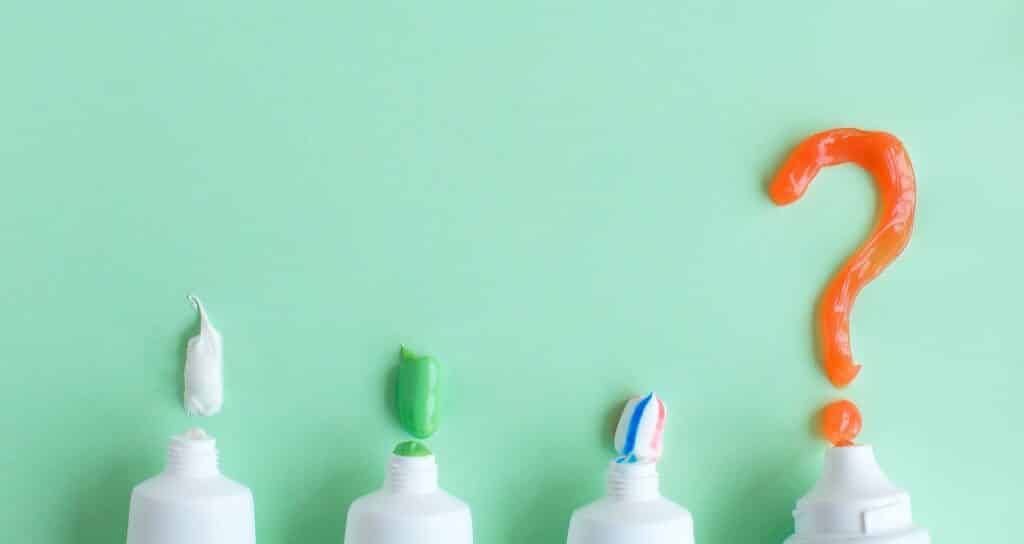Does a stroll down the oral care aisle of your local supermarket or chemist overwhelm you with the abundance of choices available?
You may have seen some toothpastes listing “fluoride-free” as a selling point. But what is fluoride and why is it in our conventional toothpastes at all?

Fluoride can take many forms in toothpaste, sodium fluoride and stannous fluoride being the most common . When applied topically to the surface of the teeth, it performs several functions:
– Following an exposure to acids from the breakdown of carbohydrates by oral bacteria or directly from food or beverages (e.g. citrus fruits or flavouring, vinegar, wine, carbonated drinks), fluoride integrates itself into the mineral of the teeth by forming a crystal structure called fluorapatite. Fluorapatite is the most acid resistant mineral form that our teeth can take on. Without fluoride being regularly applied with twice daily brushing, the teeth are usually made up of hydroxyapatite crystals which are less resistant to acid attacks. The net result of this process is an increased vulnerability to dental decay and increased risk of needing fillings to repair the teeth.
– Fluoride is also an antibacterial chemical. By temporarily immobilising the acid-producing bacteria in our mouths, the bacteria cannot spit out acids when you eat carbohydrates, at least while you are brushing 12-hourly with a fluoride toothpaste. With fewer acid attacks, decay is less likely to take hold.
When might you not require a fluoride toothpaste?
– If your diet is very low in acids (e.g. citrus fruits or flavouring, vinegar, wine, carbonated drinks) and carbohydrates then you can theoretically use toothbrushing alone to mechanically remove plaque (i.e. bacteria) from the teeth – you don’t even need a toothpaste. However for the vast majority of people who eat a modern diet with processed foods and drinks this simply isn’t appropriate.
– If you have a child under the age of 6, they typically don’t need to use a full strength fluoridated toothpaste unless they are at a high risk of decay (depending on diet and toothbrushing abilities of the child and parent), as assessed by a dentist. Children under 2 years may use fluoride-free toothpaste, and children between age 2-6 may use a low-fluoride toothpaste. The age appropriateness of a product is usually listed on the packaging. Once a child begins to develop their adult teeth at age 6 onwards it’s time to start using an adult strength fluoridated toothpaste. Between ages 6-14 it’s critical to use a fluoridated toothpaste to ensure the teeth are made of highly acid-resistant fluorapatite crystals.
To sum up – if you eat a modern diet containing sugar, simple carbohydrates (such as starches in potatoes, white rice, white flours) or other dietary acids, you need to be using a fluoridated toothpaste to prevent acid damage in the form of decay or dental erosion. If you’re still unsure of the need for this, discuss your lifestyle and risk factors with your dentist to establish a more tailored approach.
